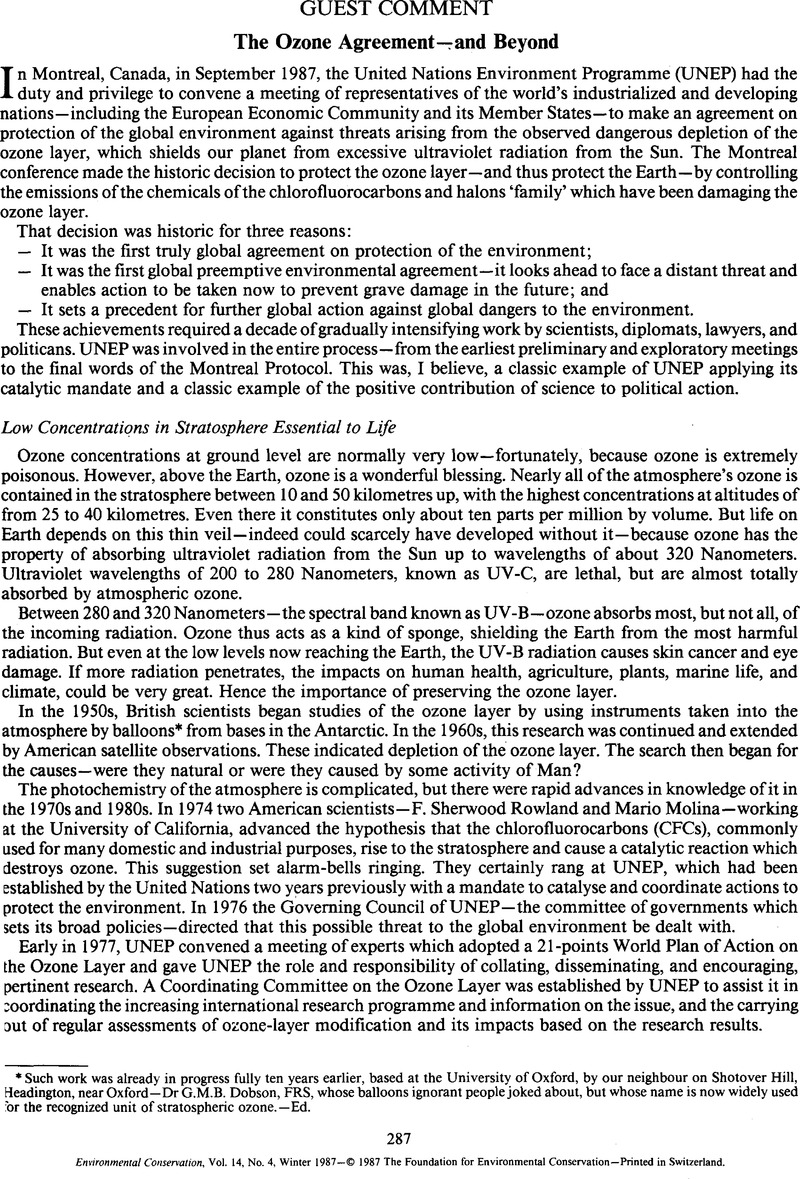Article contents
The Ozone Agreement — and Beyond
Published online by Cambridge University Press: 24 August 2009
Abstract

- Type
- Guest Comment
- Information
- Copyright
- Copyright © Foundation for Environmental Conservation 1987
References
* Such work was already in progress fully ten years earlier, based at the University of Oxford, by our neighbour on Shotover Hill, Headington, near Oxford — Dr G.M.B. Dobson, FRS, whose balloons ignorant people joked about, but whose name is now widely used for the recognized unit of stratospheric ozone.—Ed.
* and reported to us verbally by one leading authority to approximate 60% in all.—Ed.
† Or that such depletion could be due to oxides of nitrogen emitted by high-flying supersonic transport airplanes (SSTs) and military ones—see, for example, the discussions etc. particularly on pp. 154–5, 168–71, and 175–7, of The Environmental Future, published by Macmillan, London & Basingstoke, England, UK, and Barnes & Noble, New York, NY, USA: xiv + 660 pp., illustr., 1972.—Ed.
* As we were recently assured verbally by the scientific director of a leading manufacturer, ‘though it may take some years’.—Ed.
- 6
- Cited by




